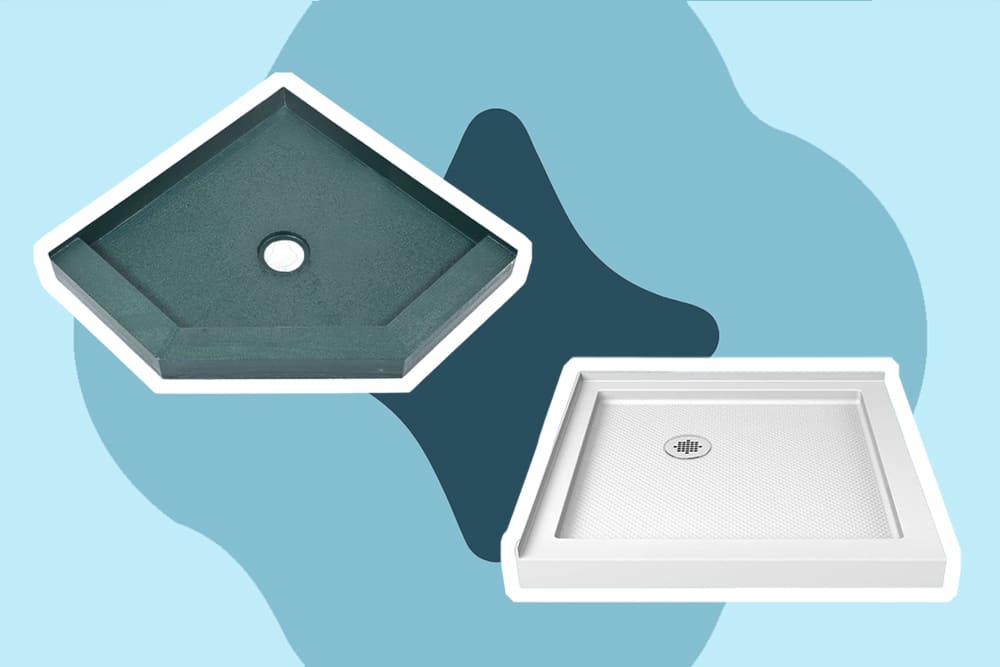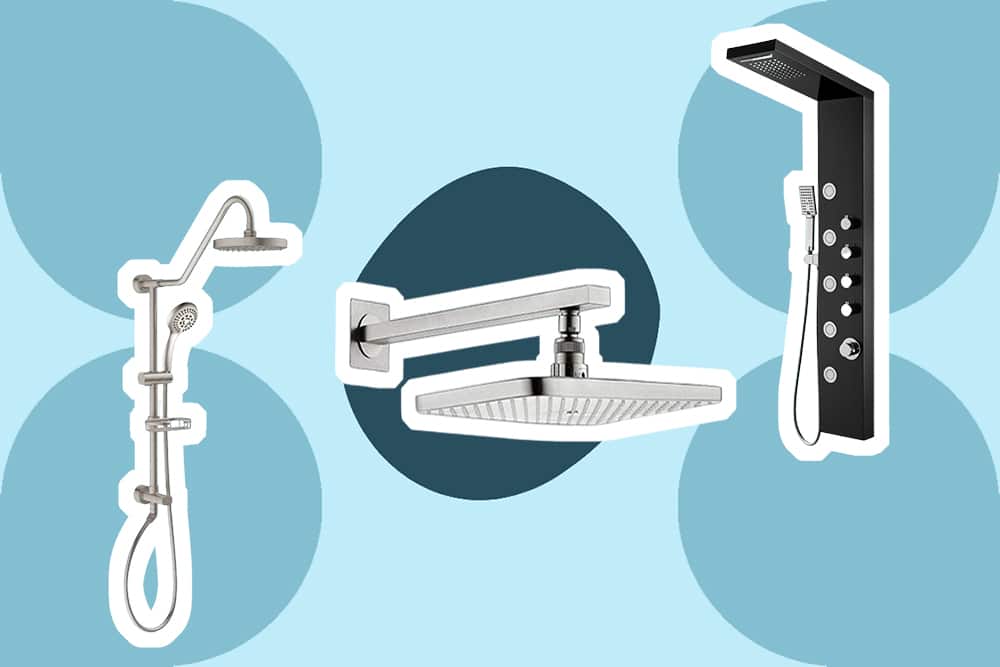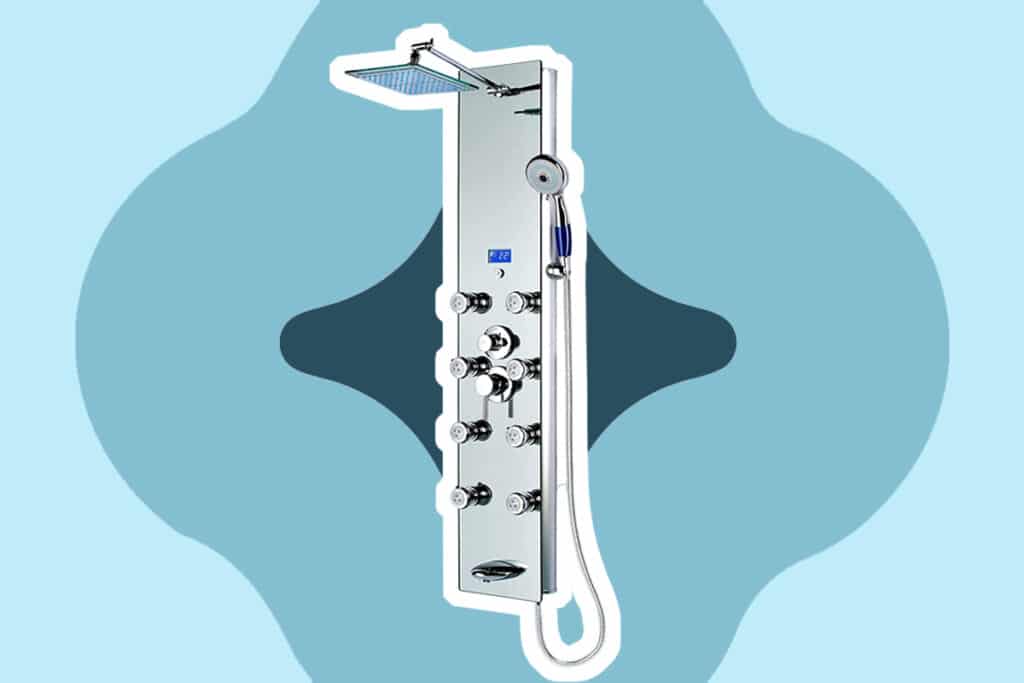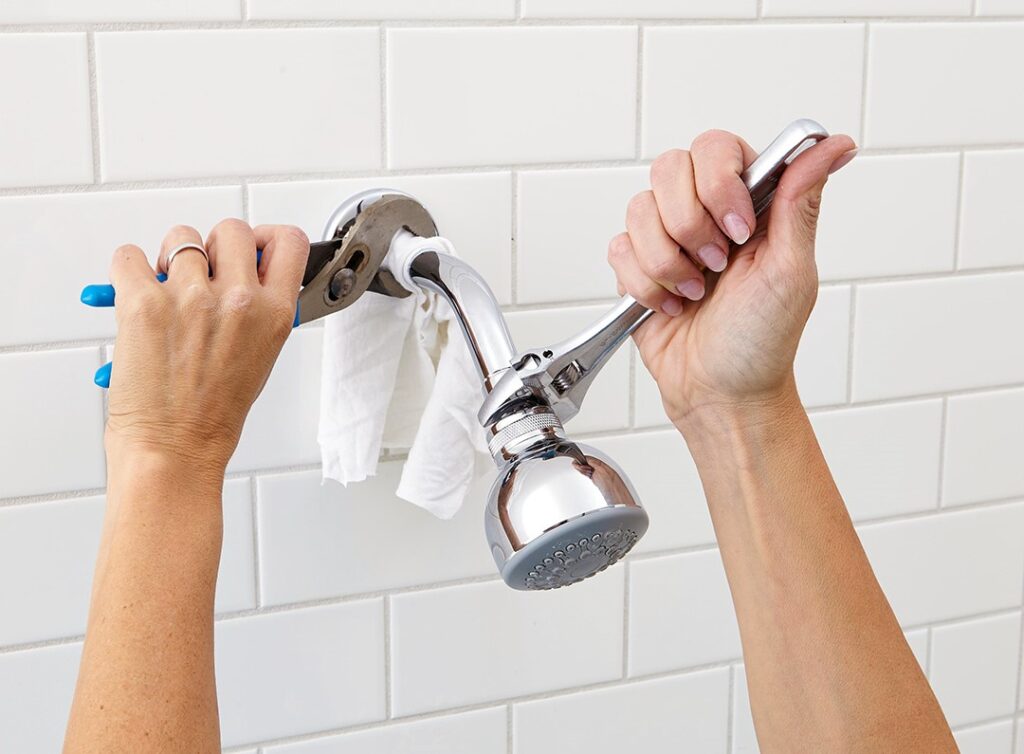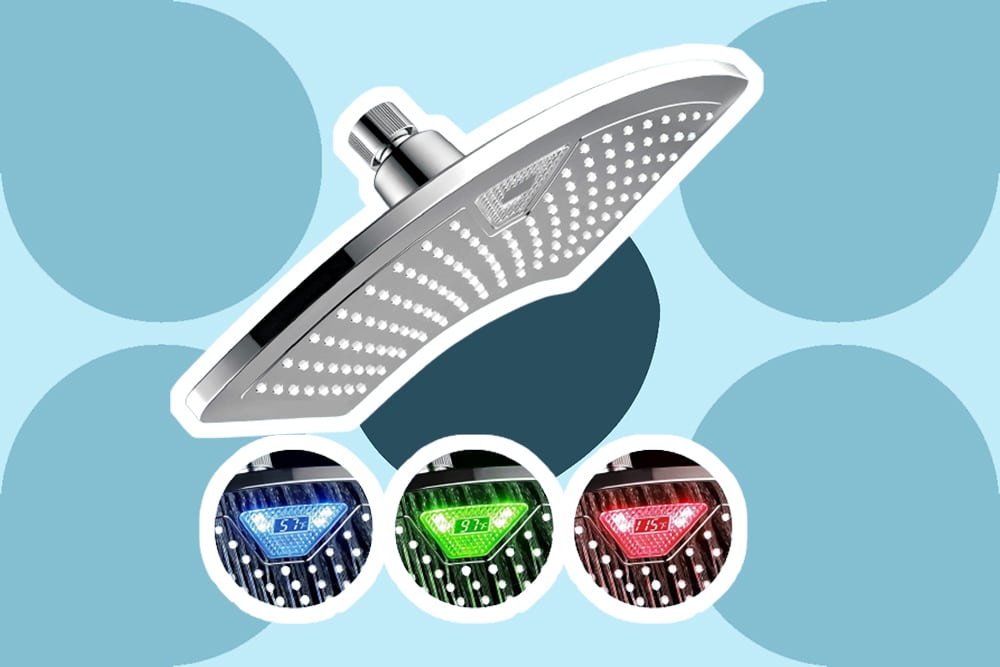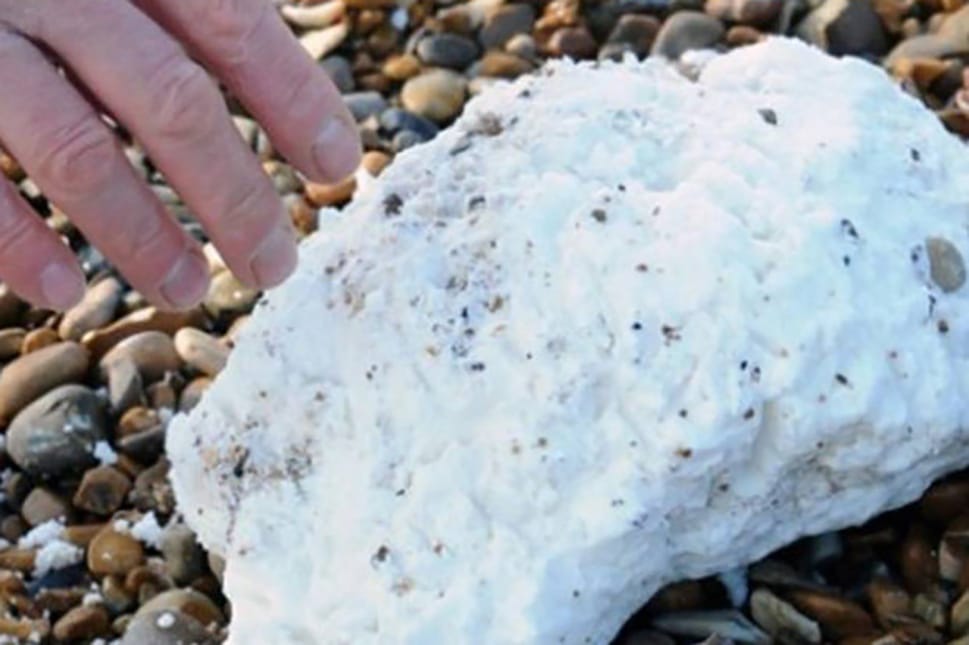

Water pressure can make a huge difference in how much we enjoy a shower. Not only that, but low water pressure can also make it a lot more difficult to clean yourself effectively. This is why you need to know how to increase shower water pressure.
Calling a professional plumber to fix your problem can be quite costly. Fortunately, there are some methods you can so you can learn how to increase shower water pressure. In the majority of cases, you will simply need to replace an inexpensive part.
Here we will take a look at how you can test your shower water pressure, what causes it, and the methods you can try to solve your issue. By the end, you should have a clear idea of what you can do to have a powerful shower once again.
Aside from you noticing that the water from the showerhead comes at a more moderate rate, there is also a simple experiment you can do to test the water pressure. Take your phone and a one-liter (or 0.33 fluid ounces) measuring jug into your bathroom, and then turn on your shower.
Let the water run until it reaches its full power. Put the jug under the flow and start timing on your phone how long it takes the water to fill the container. The maximum amount of time it should take is 6 seconds. If it’s longer than that, you have low shower water pressure.

Old piping – If you live in an old house or in a part of your city where water pipes are very rarely changed, you probably have an old and worn piping system. Also, if the pipes were made from iron, they are more prone to rusting, which are more prone to long-term issues.
Undersized piping – Another problem old houses might have is an original plumbing system consisting of pipes that can carry a smaller water volume. Similar to the previous one, you will probably notice this problem in your whole house.
Clogged water system – Aside from rust, there can also be dirt and mineral build-up in your watering system, clogging it up. If your area has hard water containing minerals, they can form scales. These can jam fittings and the showerhead, restricting water flow.
Obstructed valve – Maybe your main shut-off valve is broken or blocked in some way, preventing water from entering your water system or leaking somewhere. Or maybe you just haven’t opened it fully when you moved in.
Faulty pump – If you live in an area where you need to use a water pump to have sufficient water pressure, the problem could be the pump itself if it’s broken or faulty.
Restricting showerhead – If your showerhead came with your modern shower, it could be a water-saving one that restricts water pressure deliberately. If not, maybe you need to clean it, as a dirty showerhead can restrict water flow.
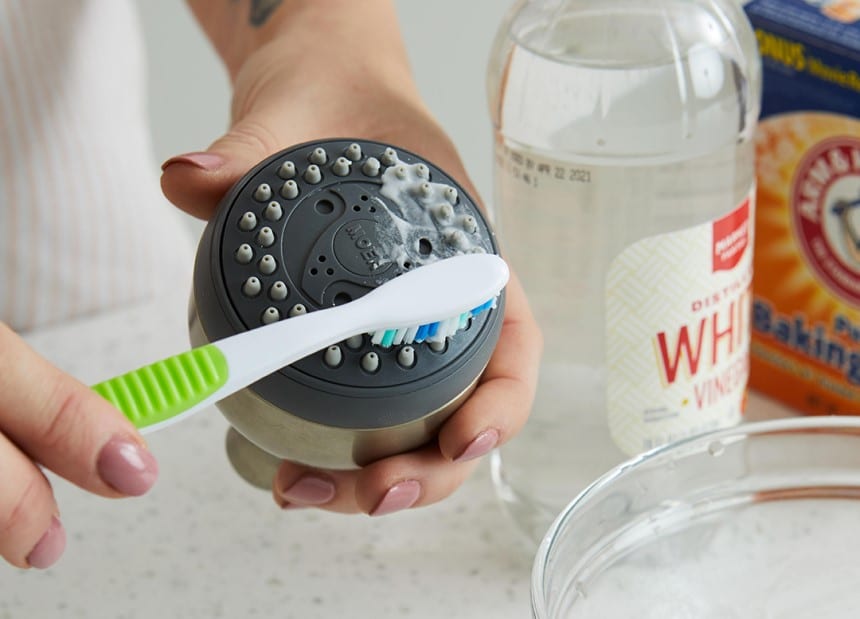
A common cause here is that you have hard water that is causing limescale build-up. Even if the water gets there through the pipes under high pressure, the clogged shower head will restrict it from flowing out at the same rate.
If you’re wondering how to increase shower head water pressure, then start by unscrewing your shower head and removing its filter. Modern shower heads usually have one, and you can clean it with water using your fingers, a sponge, or a toothbrush. Try to do as thorough of a job as possible by removing all the sediment.
For a heavier, more stubborn build-up, use vinegar or a vinegar-based cleaning product while scrubbing the showerhead with the toothbrush. Soak the showerhead in vinegar if needed. When you are done cleaning, put the filter back in and screw the showerhead back in its place.
Modern showers are usually all about being environmentally friendly, and as such, they often come with water-restricting showerheads. If the low water pressure problem only exists in your shower and cleaning it doesn’t help, you may try to replace your low-flow showerhead.
They are usually easy to unscrew, and most of them come with fairly standard fittings. It’s always a good idea to double-check the measurements and fittings to ensure a perfect fit. If your shower is brand new, you might find in its instructions how to remove the restrictor, which can greatly increase the amount of water allowed through the showerhead.
If you have a low water issue because of inadequate plumbing, a regular, non-restricting showerhead won’t solve your problems, but a low-pressure showerhead might. These are a little more costly than the regular ones, but it’s still a lower price than replacing pipes.
They amplify the water pressure in your shower, so the showerhead drives water out at a higher pressure than a standard model does. You may also choose a handheld showerhead as these allow you to cut down the distance from head to body for more effective cleaning.
Are you looking for a new shower head for low water pressure? Check the HO2ME handheld model. If you want to get a rain shower head, the Luxury Spa Series Rainfall model from ShowerMaxx might be ideal.
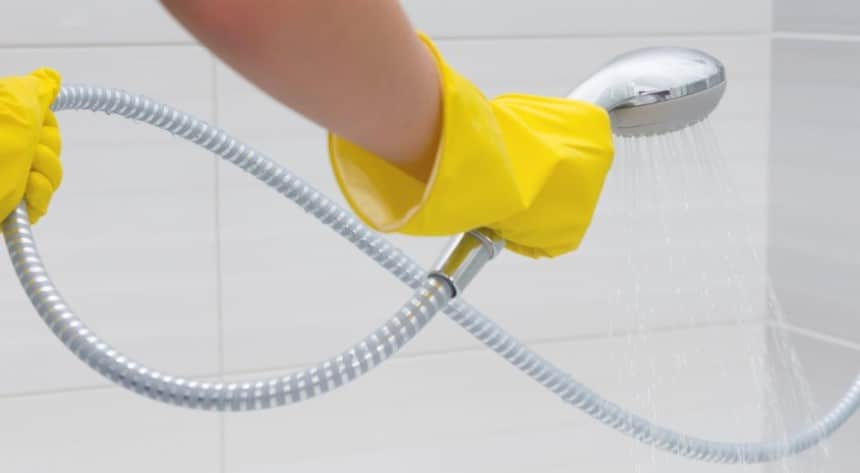
For maximum comfort, a hose should be at least 4 inches longer than the tallest potential user. This will also depend on where your shower valve is placed in your shower. Replace the old shower hose to stop the kinks from obstructing the water flow. When doing so, aim to get a higher quality one, preferably one made out of stainless steel. These are usually kink-resistant, anti-twist and even have a reinforced interior.
When you are checking your hose, you should also check its fittings. A broken fitting or one in the wrong size could also cause water pressure issues. You may have to replace these too and get them in the correct size and form.
If you only have low pressure when you are using hot water, but not when using cold water, the problem may lie with your water heater. The first thing you need to do is to check whether the shut-off valve of the water heater is fully open or not.
If it isn’t open all the way, the hot water flow will be restricted. Your water heater’s manual should have all the instructions on how to place the shut-off valve in the proper position to fully open the hot water flow.
Scale deposits can clog up your water heater too, which will restrict the shower water pressure. Try cleaning out your water heater tank to see if it improves the pressure. Unplug the power supply to your water heater, find its cold water valve, and turn it off. Connect a garden hose to your drain valve, then open up the hot water somewhere in your house to let air inside the tank.
Drain the tank through the valve, shut the pressure relief valve off while opening up the cold water supply to dislodge sediment trapped in the tank. Close your drain valve and let the water heater fill it back up by opening the cold water valve. Turn the pressure relief valve back on and then close the cold water valve. Once the tank is half full, shut the pressure relief valve off and plug the heater back in.
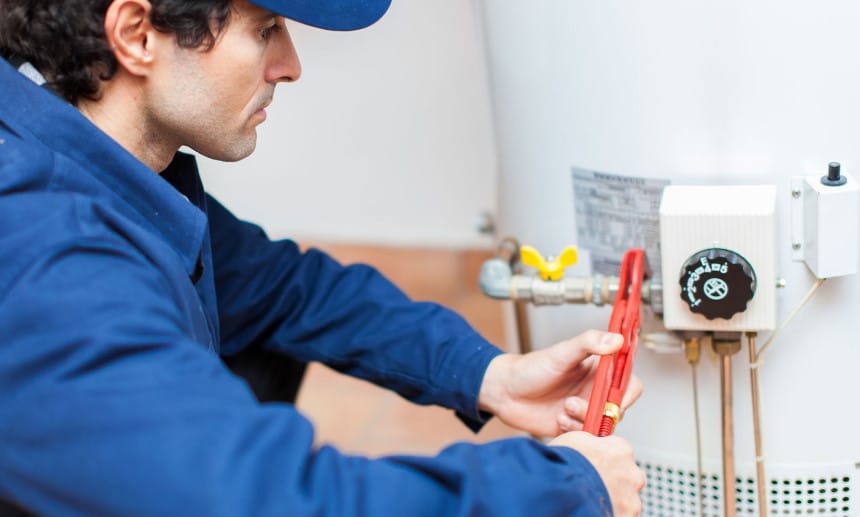 Check valves inside the house
Check valves inside the houseAnother easy solution on how to improve shower water pressure might be opening up valves that are not fully open. If you have shut-off shower valves for conserving water, you should try to check those first. It may not be all the way open, or it’s corroded and stuck. In the last case, you will have to replace it.
Have you had any plumbing work done recently, or you just moved into a previously empty house? Your main water shut-off valve may have been turned off due to construction or to prevent leaking while no one was there but accidentally not turned all the way back on. Check your valve and tried to turn it on fully. If you have a round handle, turn it counterclockwise, and if you have a lever type, turn it parallel to the water pipe.
Some homes have an in-line shut-off valve placed for every water outlet inside and outside the house. These valves act as emergency stops in case of leakage and are usually located near the supply point. For your shower, these valves are probably located on the pipes leading up to the shower.
Even if the pressure is off in the whole house, it could be that the culprit for the low shower water pressure isn’t even located inside your house. Maybe the outside valve that directs the water into the water valve leading into your home is the one that’s only partially open.
If the water supply company has recently done some works and needed to turn off the curbside valve, they might have missed turning it fully on. You can adjust this one as well with the help of a water key.
First, you need to find the curbside water mains outside of your house. It’s usually inside a box or under a protective covering of some sort. Take of its cover with the water key, locate the shut-off valve and check if it’s in a fully vertical position. If the valve is at an angle, it’s not fully open. Grasp the valve with the water key and twist it to a fully open position.
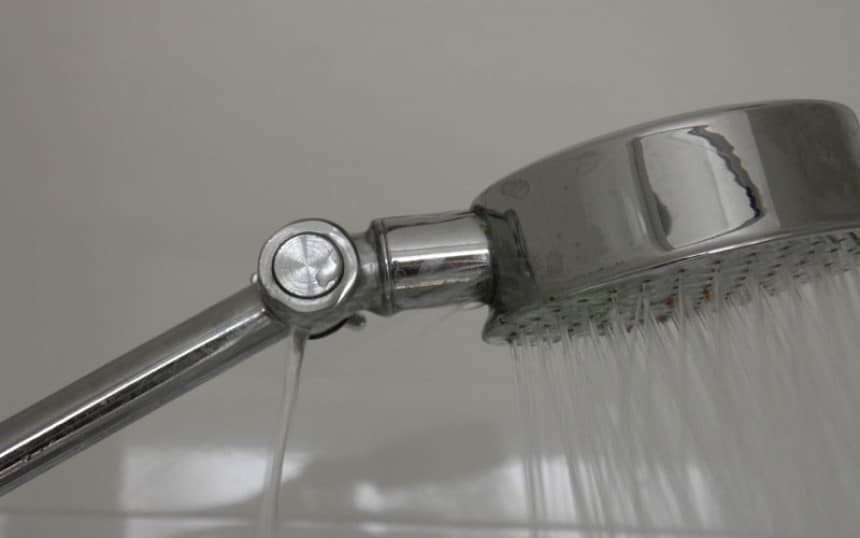
Unfortunately, the solution is not always as simple as that. You can check your other water outlets, such as faucets and pipes under them. A leaking pipe here can be repaired with epoxy, but you will eventually have to replace it. If you still can’t find the leak, it might be in your hidden pipes.
To find out if you have any hidden leaks, you can do a simple water reading and repeat it after two hours without using water in the meantime. If the reading has changed, you have a leak that will require some serious plumbing work. It’s essential to find it as soon as possible before it does more damage to your house.
It’s possible that your water main has a built-in pressure regulator to keep your water pressure at a certain level. This regulator exists to prevent high water pressure levels from damaging your appliances. The optimal pressure for this is 50 pounds per square inch, but you can set it higher if needed.
To do this, you will need to test your pressure level to see exactly how low it is. For that, you will need a standard pressure gauge. Switch off your water heater and make sure no water is running anywhere in your house. Then find the pressure regulator, it’s usually by your water main shut-off valve and water meter.
Attach a pressure gauge to any faucet and begin running the water to run the test. When you have a pressure reading, turn off the faucet. Take a wrench that fits the nut on top of the water pressure regulator and turn the bolt clockwise to raise the pressure. Go back to your gauge that’s set up on the faucet and turn on the water again to do a new reading.
In case all your parts are working fine, all your valves are open, but you still haven’t gotten the pressure you need, you might consider investing in a pressure pump to raise the pressure. This is a great way to increase your shower water pressure, and being in the mid-price range, it’s still less expensive than changing your plumbing system.
There is one downside to this method, however. Unless you are a professional plumber yourself, you will probably need to hire one to install the pressure pump for you. Which means this will be an added cost. But they will able to find the best pump that suits your needs and your budget.
You will also have to think about one other fact. When using a pressure pump to boost your shower water pressure, the pressure usually has to come from somewhere. It will considerably lower the water pressure your other appliances get. Therefore don’t plan on running the washing machine and the pressure pump for the shower at the same time.
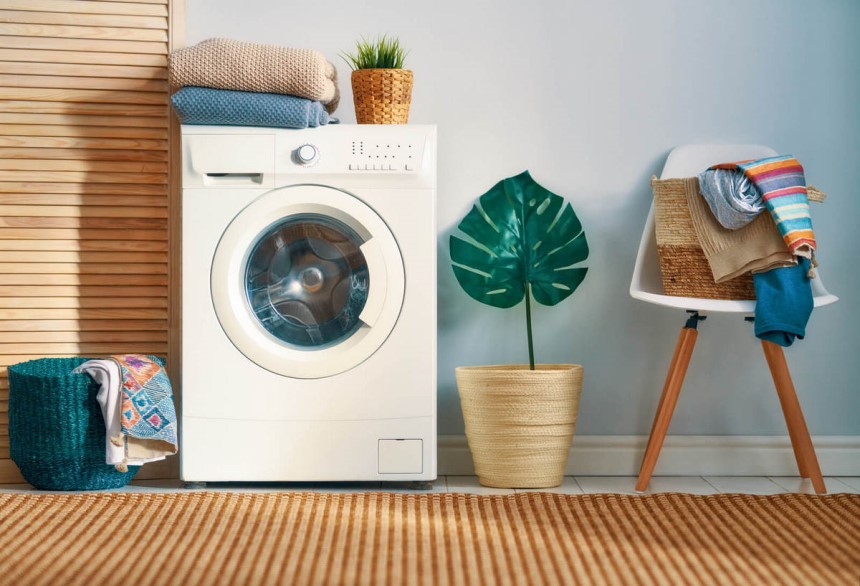
A dishwasher set in eco-friendly mode can use slightly less, but it still decreases the pressure. If you want to grab a shower and wash your gym clothes after training, don’t do both at the same time. Take a quick shower, then turn on the washing machine. Or, if the washing machine is already on, pause it while showering. This can even elongate the lifespan of your washing machine, as overusing its pump can wear it out more quickly.
A pressurized hot water cylinder or tank works similarly to the water pressure pump, only on a much larger scale. Usually used in larger households, where hot water is always needed, especially for showers. It serves as a replacement for your cold water tank and will get the water supply directly from the main water valve, as the tank did.
However, the pressured cylinder often uses modern solutions to create pressure that isn’t compatible with older piping. Consequently, if you have an older house, your whole plumbing system will have to be removed. This will involve hiring a professional who can also help you select the type of pressurized cylinder you need, as there are various options available.
As this is a rather expensive option, you should consider it only if you are willing to invest in renewing your old plumbing system. For example, if you have low water pressure due to old pipes, this could be a great permanent solution to resolve that.
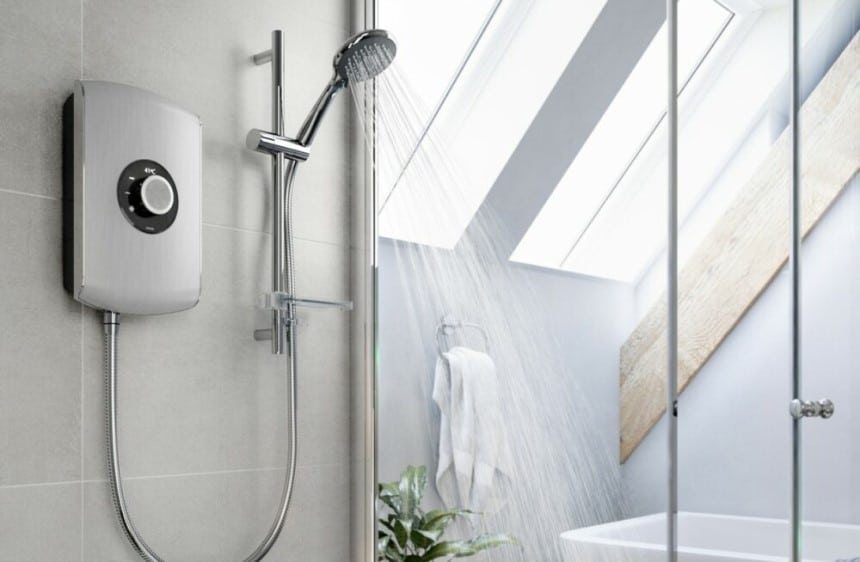
You just have to turn it on, and the cold water will begin to flow from the tank to the shower. When it reaches the electric shower, this automatically heats up the water and releases it hot and under high pressure out of the showerhead. It’s a great solution if you have low water pressure in the home.
Usually, there is a pattern to the lowering of your water pressure. This is more prominent if you wanted to know how to increase water pressure in a shower in an apartment, but it is common in individual houses too. Most people take showers in the morning after getting up and before going to work.
Also, during the hot summer months, there is often a need to shower in the evening. If you can avoid showering in these hours, you might have a higher shower water pressure. Of course, this is only a viable option if you can change your schedule, which isn’t possible for everyone. But if you can do that, this could be a sensible alternative for the pressure pump, as it won’t cost you anything.
As you can see, there are a lot of options available to increase your shower water pressure. Some are more budget-friendly than others, but your solution will mostly depend on the problem you had in the first place and your personal preference.
It’s best to first look at the inexpensive solutions as it may just be a minor issue such as mineral build-up in your showerhead. Hopefully, it’s not a serious issue that will require a professional plumber, but sometimes that’s your only choice.
Hopefully, now you have a good idea of how to increase shower water pressure. There are plenty of solutions available, and soon you’ll be enjoying powerful showers.
